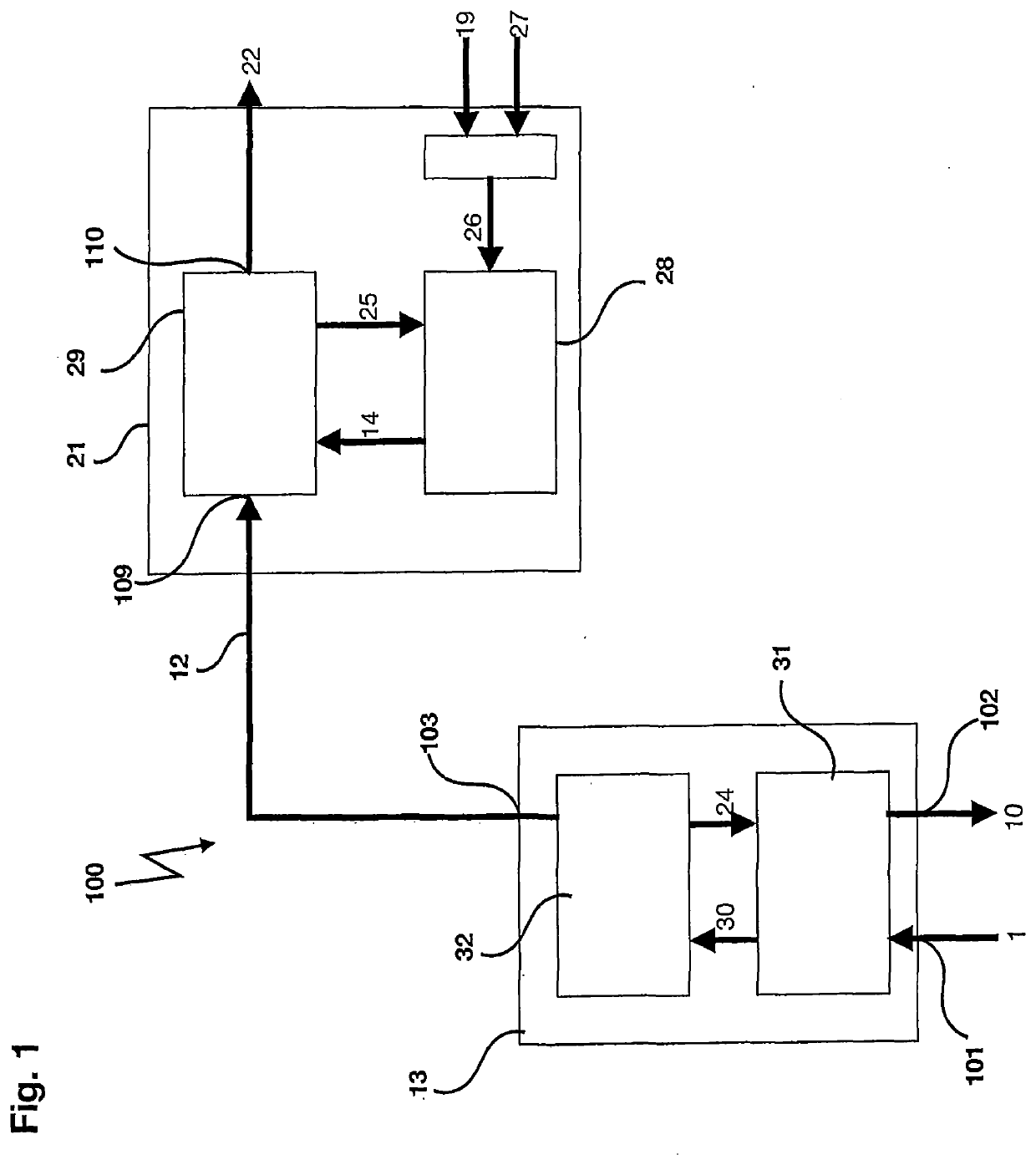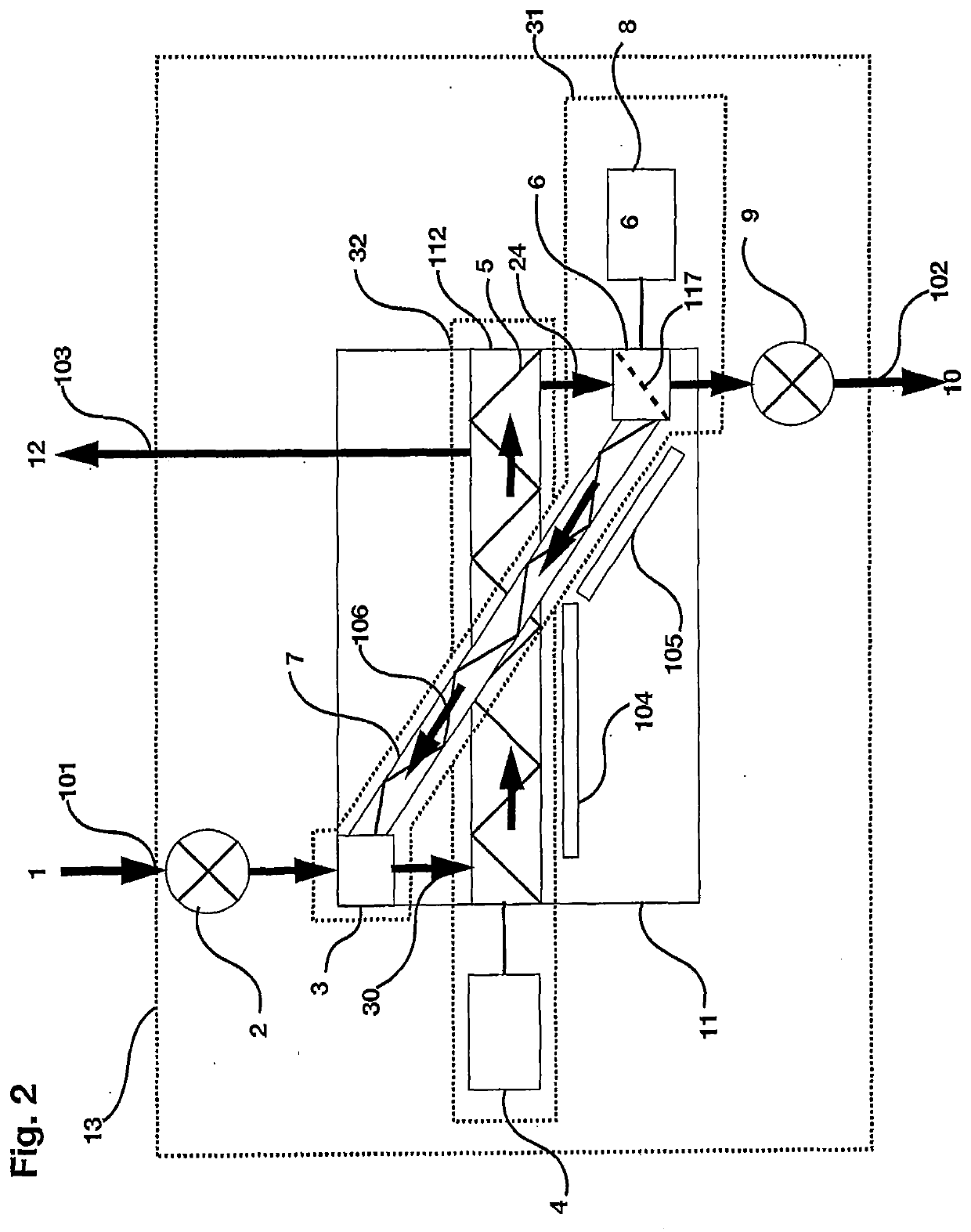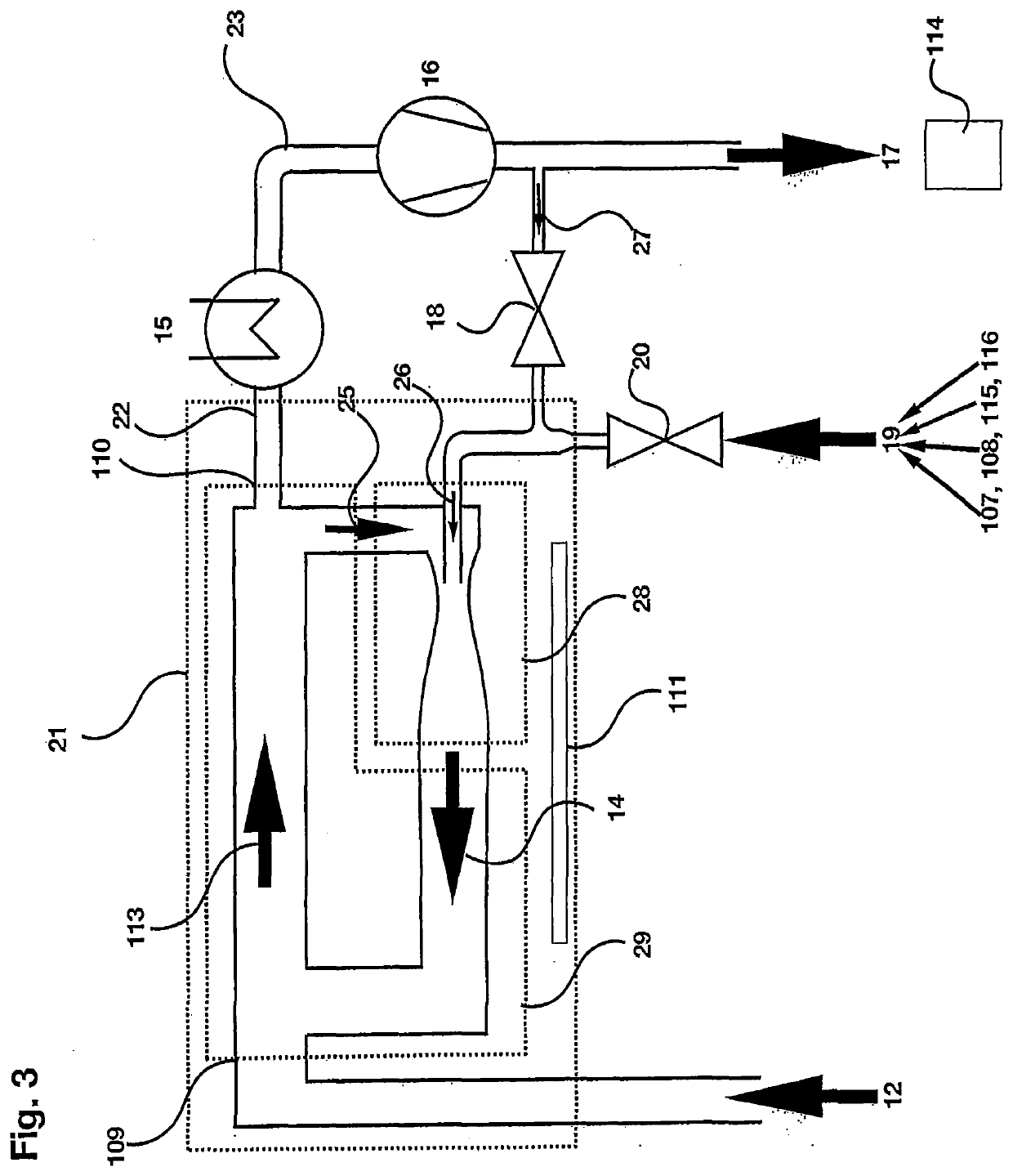Highly efficient and compact syngas generation system
a generation system and high-efficiency technology, applied in the direction of combustible gas production, products, educts, etc., can solve the problems of large centralized system realization, increased specific investment cost, and increased transportation costs of feedstock
- Summary
- Abstract
- Description
- Claims
- Application Information
AI Technical Summary
Benefits of technology
Problems solved by technology
Method used
Image
Examples
Embodiment Construction
[0020]Referring now to FIG. 1 there is shown the block flow diagram of the invention. The feedstock, or educt 1, which may comprise any organic solid and / or pasty matter or mixtures of solid organic matter and / or liquid organic matter such as wood waste, plastics, organic household waste or tires is being disintegrated under heat and an oxygen deprived atmosphere in a pyrolysis unit 13. Liquid matter may also be educt 1 for some embodiments. The pyrolysis unit 13 may be heated and may operate at a certain elevated temperature, such as from 200-1200 C or more preferably about 600 C (for at least some wood waste as educt 1) to sustain a pyrolysis reaction. Products from the pyrolysis process of the treated educt 1 are: output char 10 and a gas / vapor mixture 12.
[0021]A first, often a primary, pyrolysis reactor 32 may be fed with a stream 30, which may preferably be a mixture of the educt 1, received at inlet 101, and a portion of hot, recycled char 106 from return auger 31. The recycle...
PUM
 Login to view more
Login to view more Abstract
Description
Claims
Application Information
 Login to view more
Login to view more - R&D Engineer
- R&D Manager
- IP Professional
- Industry Leading Data Capabilities
- Powerful AI technology
- Patent DNA Extraction
Browse by: Latest US Patents, China's latest patents, Technical Efficacy Thesaurus, Application Domain, Technology Topic.
© 2024 PatSnap. All rights reserved.Legal|Privacy policy|Modern Slavery Act Transparency Statement|Sitemap



